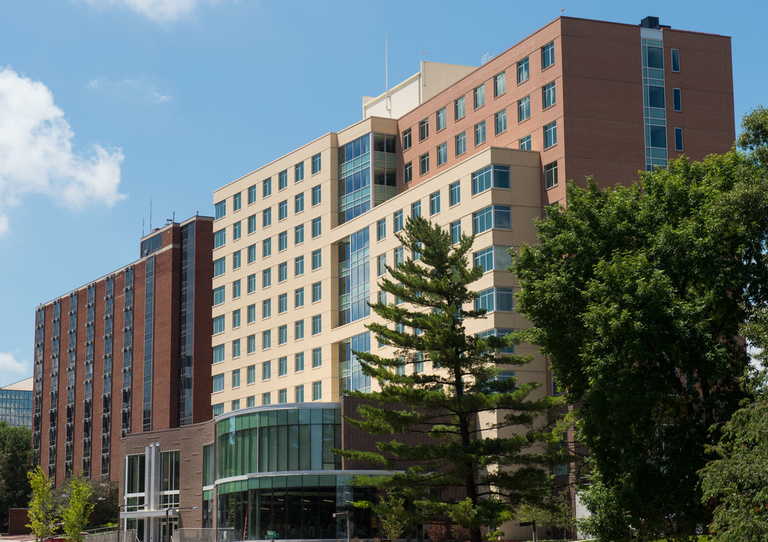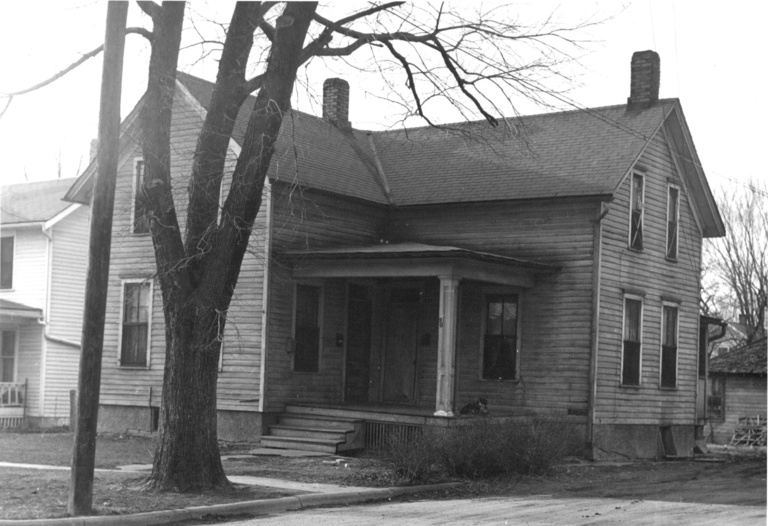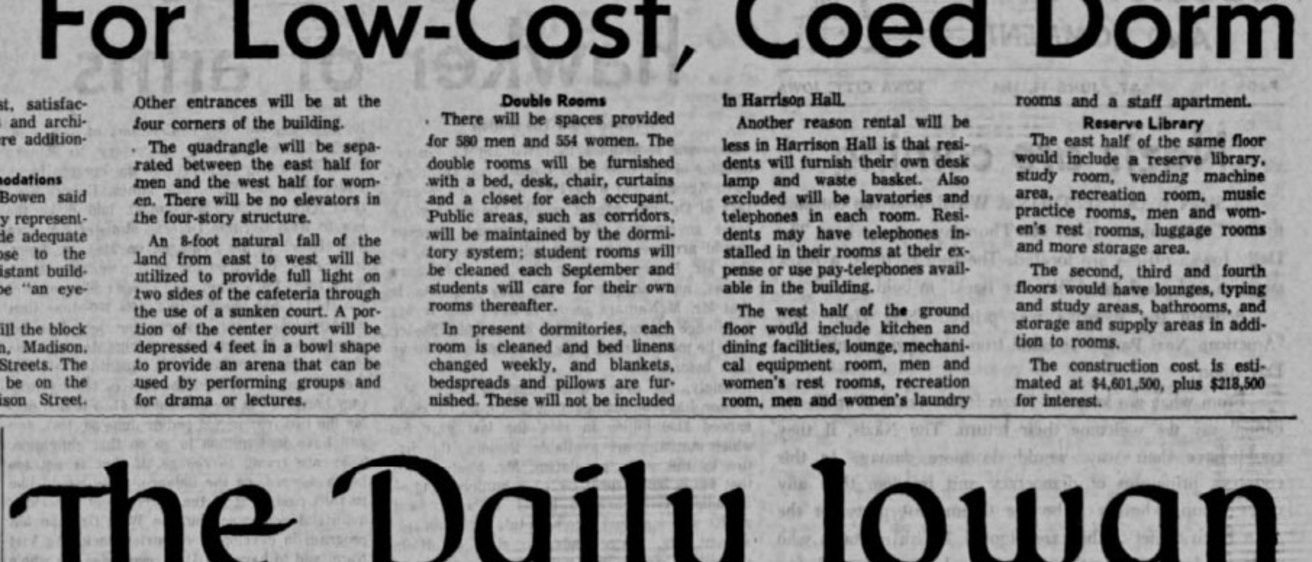They are long-familiar landmarks: residence halls dotting the campus, east and west of the river. First, Currier Hall, built in 1914, followed by Quadrangle and Hillcrest in the 1920s and 1930s. Then Parklawn, Burge, Daum, Stanley, Mayflower, Rienow, and, finally, in 1968, Slater Hall—originally known as Rienow II.

And now, for the first time in 47 years, a new dormitory greets students this fall. The Petersen Residence Hall is named for Mary Louise Petersen, a distinguished leader of higher education in Iowa who served as president of the Iowa Board of Regents from 1973 to 1981. The new facility will house 500 students, offering learning commons and living-learning communities (LLCs) consisting of residents who share a common value or academic interest.
In addition, a new 12-story residence hall east of the river, on North Madison Street about two blocks north of the Iowa Memorial Union, is under construction and will eventually house over 1,000 students.
The modern-day boom in on-campus housing construction, after decades of quiet, is in response to demand from a record-setting enrollment that includes, for the first time, more than 5,000 incoming first-year students this fall. Such growth wasn’t always the case, however, and even in the fast-expansion 1960s era, not every proposal for new housing came to fruition.

Take Harrison Hall, for example. The planned 1,100-student high-rise, proposed in 1966, never got off the ground. University planners envisioned a tower, flanked by a parking lot, on the block south of campus bordered by Harrison, Prentiss, Madison, and Capitol streets. The dormitory that never came to be was a victim of two intersecting factors: an over-developed stock in housing—university-sponsored as well as in the private sector off-campus—and a slight drop in anticipated enrollment. At UI president Howard Bowen’s request, the Board of Regents withdrew plans to construct Harrison Hall and, in the summer of 1967, authorized the university instead to construct a “temporary” surface parking lot.
The lot remains at this site today, serving UI faculty and staff, and is adjacent to the Johnson County sheriff’s office and jail and across from the courthouse. Harrison Street between Capitol and Madison was closed for the project; as a consequence, the lot today covers two blocks, bordered by Court Street to the north.
Plans for construction of Harrison Hall were mothballed and, eventually, discarded. Indeed, the university experienced a surplus of campus housing—something hard to imagine today—and by 1975 a portion of Quadrangle Residence Hall was demolished, becoming the “Quad with three sides.” (Quadrangle, incidentally, is scheduled to be demolished in 2016.) Little evidence of Harrison Hall remains in the University Archives, save for a few newspaper clippings and minutes of the Board of Regents. No artist’s renderings, no plans, no sketches.
Software engineers have long used the term “vaporware” to describe a product that has never actually been manufactured. Perhaps with your help, readers, Old Gold can come up with a similar word for campus buildings that…never were.
Read more Old Gold columns in Iowa Now.
